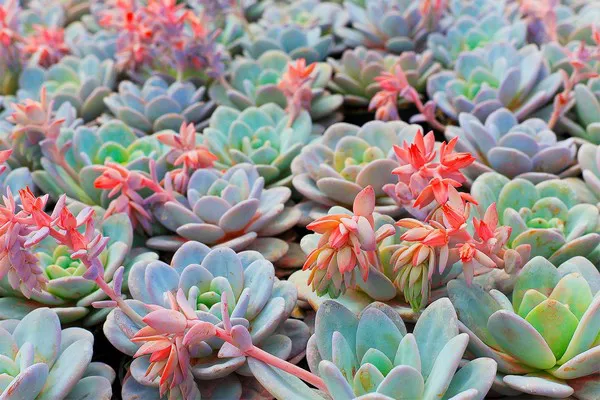Repotting succulents is a crucial aspect of their care routine, ensuring optimal growth, health, and aesthetics. However, before transferring succulents to new pots or containers, it’s essential to allow them to air dry properly. Air drying minimizes the risk of root damage, rot, and transplant shock, ensuring a smooth transition for your beloved plants. In this article, we’ll delve into the art of air drying succulents before repotting, highlighting the importance, methods, and best practices to safeguard the well-being of your succulent collection.
Understanding the Importance of Air Drying
Air drying is a crucial step in the repotting process, particularly for succulents. Succulents have adapted to thrive in arid environments with well-draining soil, and excess moisture can be detrimental to their health. By allowing the roots to dry out before repotting, you minimize the risk of root rot, fungal infections, and other issues associated with excessive moisture. Air drying also helps prepare the succulents for the transplant process, reducing stress and promoting successful establishment in their new containers.
Preparing Succulents for Repotting
Before air drying, it’s essential to prepare your succulents for the repotting process. Carefully remove the succulents from their current containers, gently loosening the soil around the roots. Inspect the roots for signs of rot, damage, or pests, and trim away any dead or unhealthy roots with sterilized scissors or pruning shears. Once the roots are cleaned and trimmed, allow the succulents to rest and air dry before proceeding with repotting.
Choosing the Right Timing
Timing is key when it comes to air drying succulents before repotting. Aim to repot your succulents during their active growing season, typically in spring or early summer. During this time, succulents are actively growing, and their root systems are more resilient to disturbance. Avoid repotting during the dormant season or during periods of extreme heat or cold, as these conditions can stress the plants and inhibit root growth.
See Also: How to replant overgrown succulents?
Methods for Air Drying Succulents
There are several methods for air drying succulents effectively, depending on your preferences and the size of your plants. One common method is to place the succulents in a shaded area with good airflow, such as a covered porch or patio. Arrange the succulents in a single layer, ensuring that air can circulate around each plant. Allow the succulents to air dry for several days to a week, depending on factors such as humidity levels and the size of the plants.
Another method for air drying succulents involves laying them out on a clean, dry surface, such as a towel or newspaper. Spread the succulents out in a single layer, taking care not to overcrowd them. Place the succulents in a well-ventilated area away from direct sunlight and allow them to air dry for several days, turning them occasionally to ensure even drying.
For smaller succulents or individual leaves or cuttings, you can also air dry them by placing them in a shallow tray or container filled with dry sand or perlite. Arrange the succulents or cuttings in the sand or perlite, ensuring that they are not touching each other. Place the tray in a well-ventilated area with indirect light and allow the succulents to air dry for several days to a week, depending on their size and moisture content.
Signs of Proper Air Drying
Knowing when your succulents are adequately air dried is essential before proceeding with repotting. Signs of proper air drying include dry, firm roots and stems, as well as a slight callus or scab forming on any cut or damaged areas. The roots should appear white or pale in color, indicating that they are healthy and free from moisture. Additionally, the soil around the roots should be dry to the touch, with no signs of excess moisture.
Avoiding Common Mistakes
While air drying is a straightforward process, there are some common mistakes to avoid to ensure success. One common mistake is placing succulents in direct sunlight during the drying process. Direct sunlight can cause the succulents to dry out too quickly, leading to sunburn or dehydration. Instead, choose a shaded area with indirect light for air drying succulents.
Another mistake to avoid is overhandling or disturbing the succulents during the drying process. Succulents are sensitive to handling, especially when their roots are exposed. Minimize handling and avoid moving the succulents unnecessarily to prevent damage or stress.
Additionally, be mindful of environmental factors such as humidity levels and temperature fluctuations during the drying process. Succulents may take longer to air dry in humid environments or during periods of extreme heat or cold. Monitor the drying progress closely and adjust your methods as needed to ensure optimal results.
Conclusion
In conclusion, air drying succulents before repotting is a crucial step in their care routine, ensuring successful transplanting and minimizing the risk of stress or damage to the plants. By allowing the roots to dry out properly, you create an ideal environment for healthy root growth and establishment in their new containers. Whether using shaded areas, dry surfaces, or shallow trays, the key is to provide adequate airflow and avoid excess moisture during the drying process. With proper air drying techniques and careful attention to timing and environmental conditions, you can ensure that your succulents thrive and continue to bring beauty and joy to your space for years to come.


